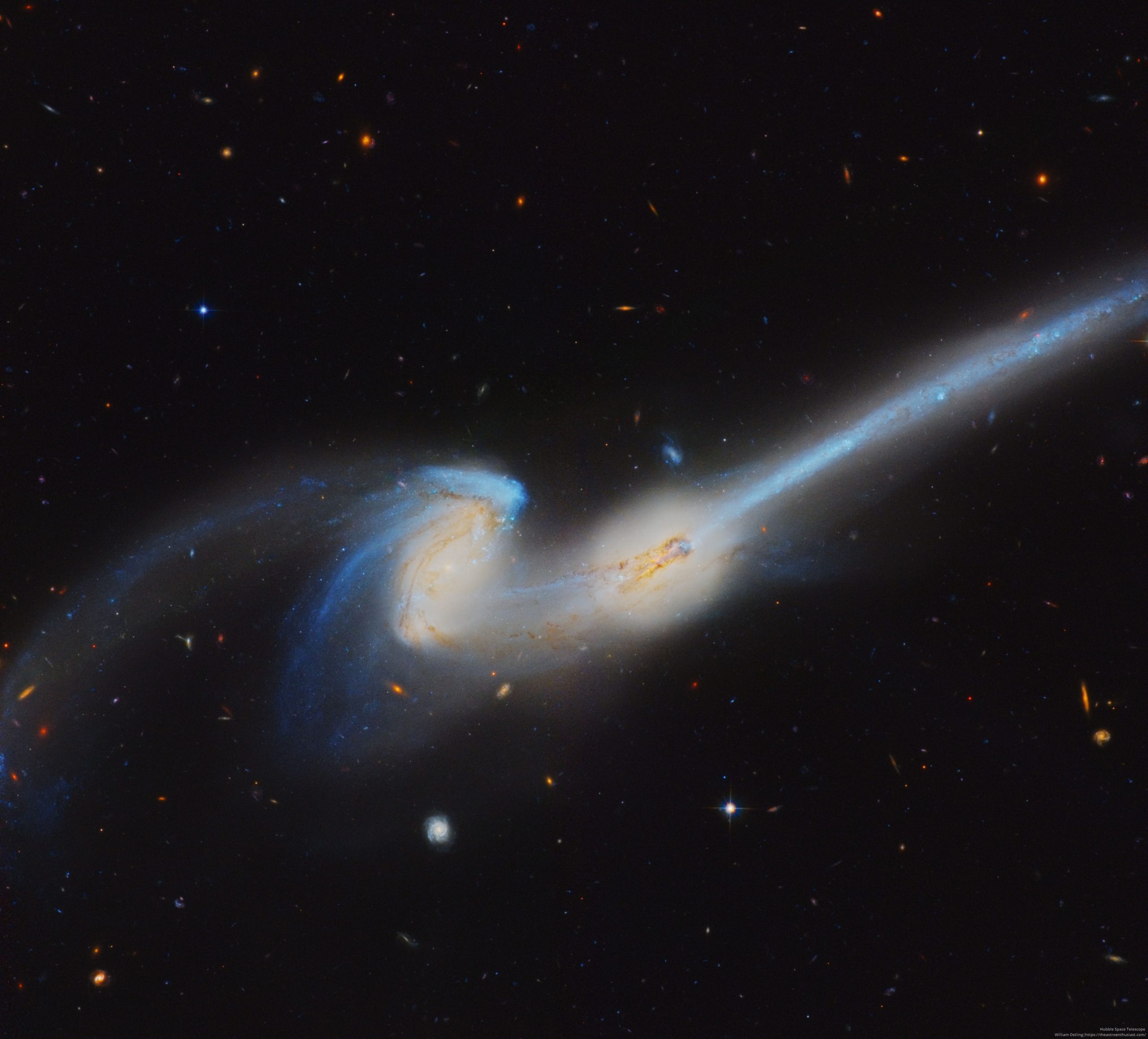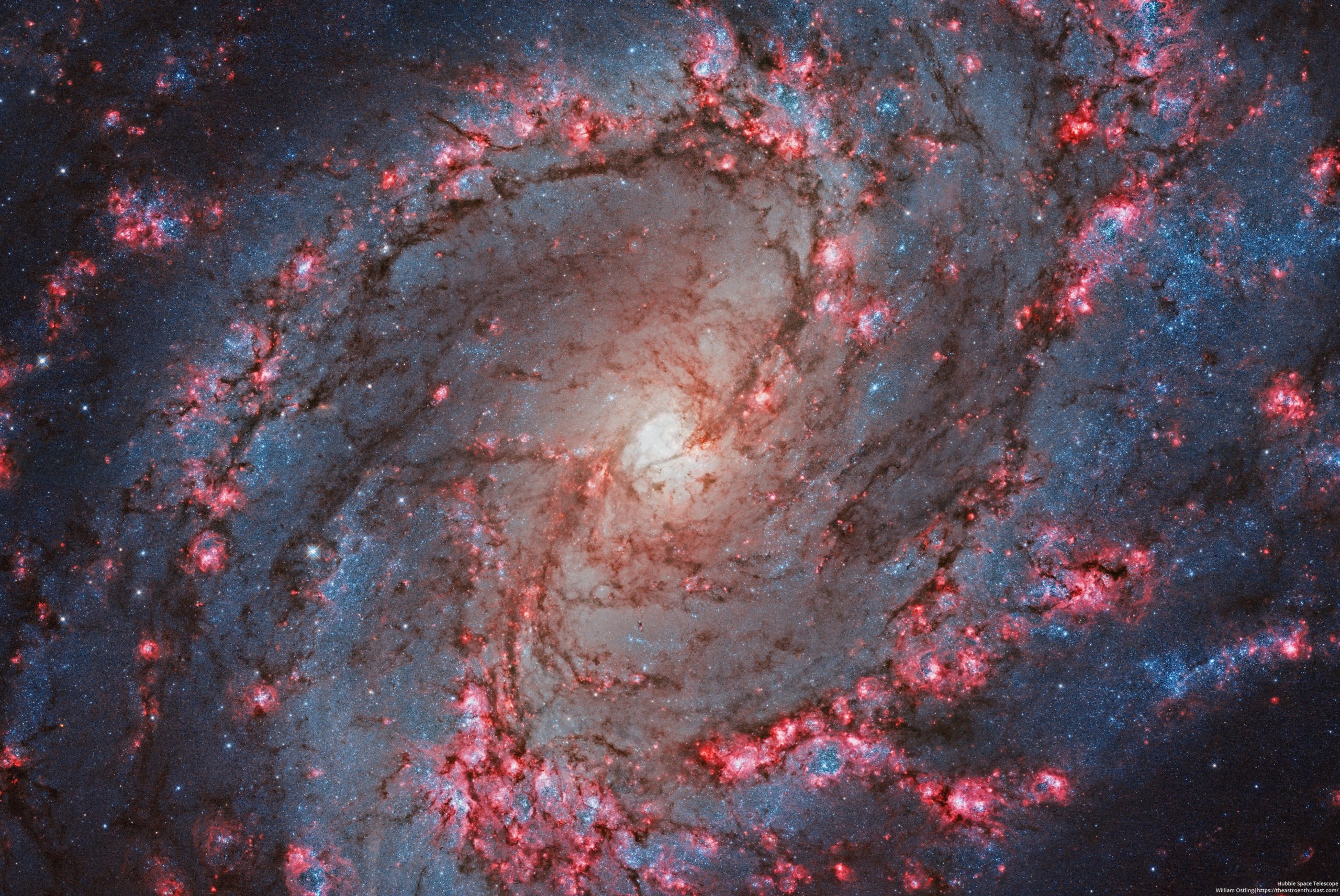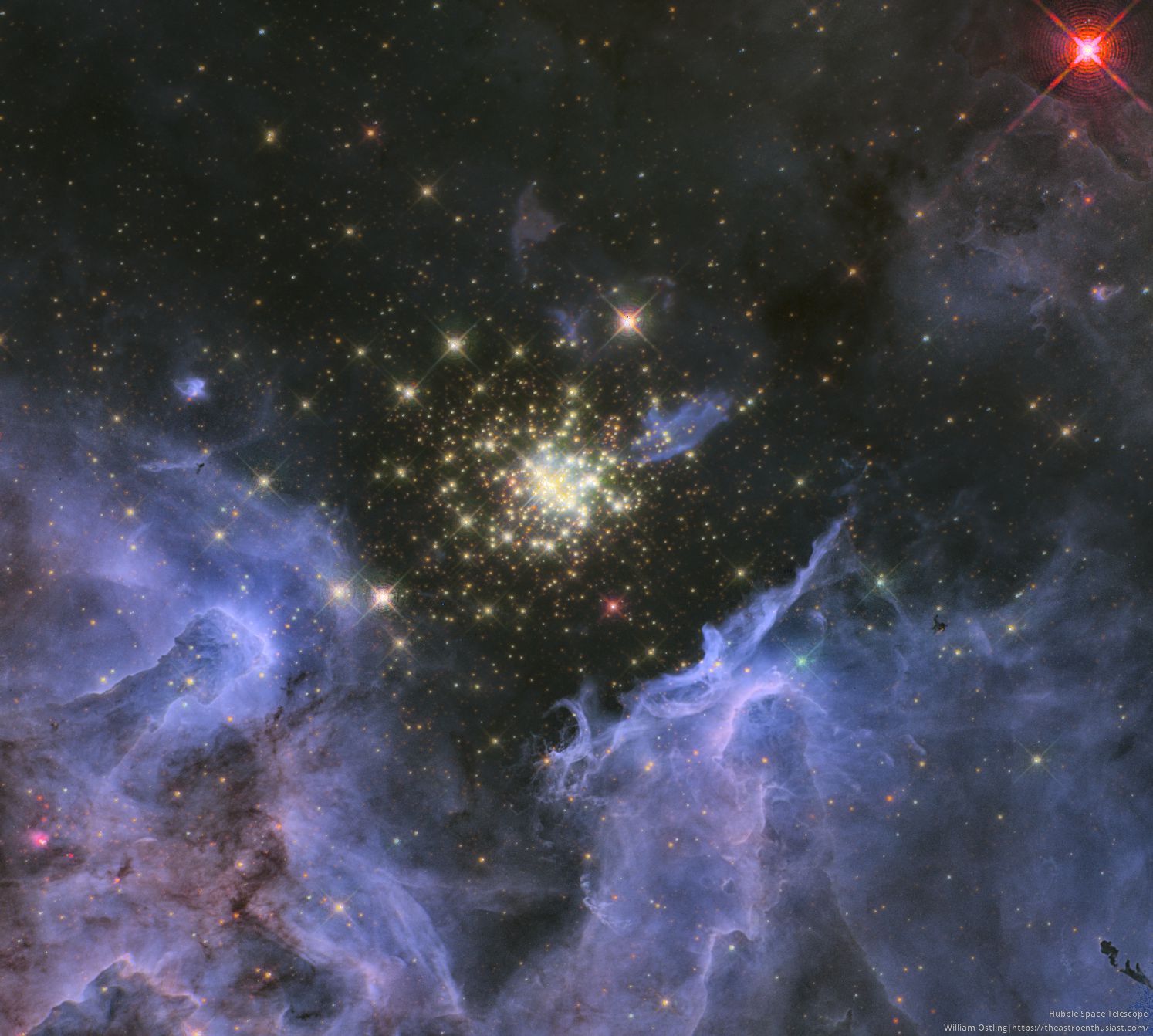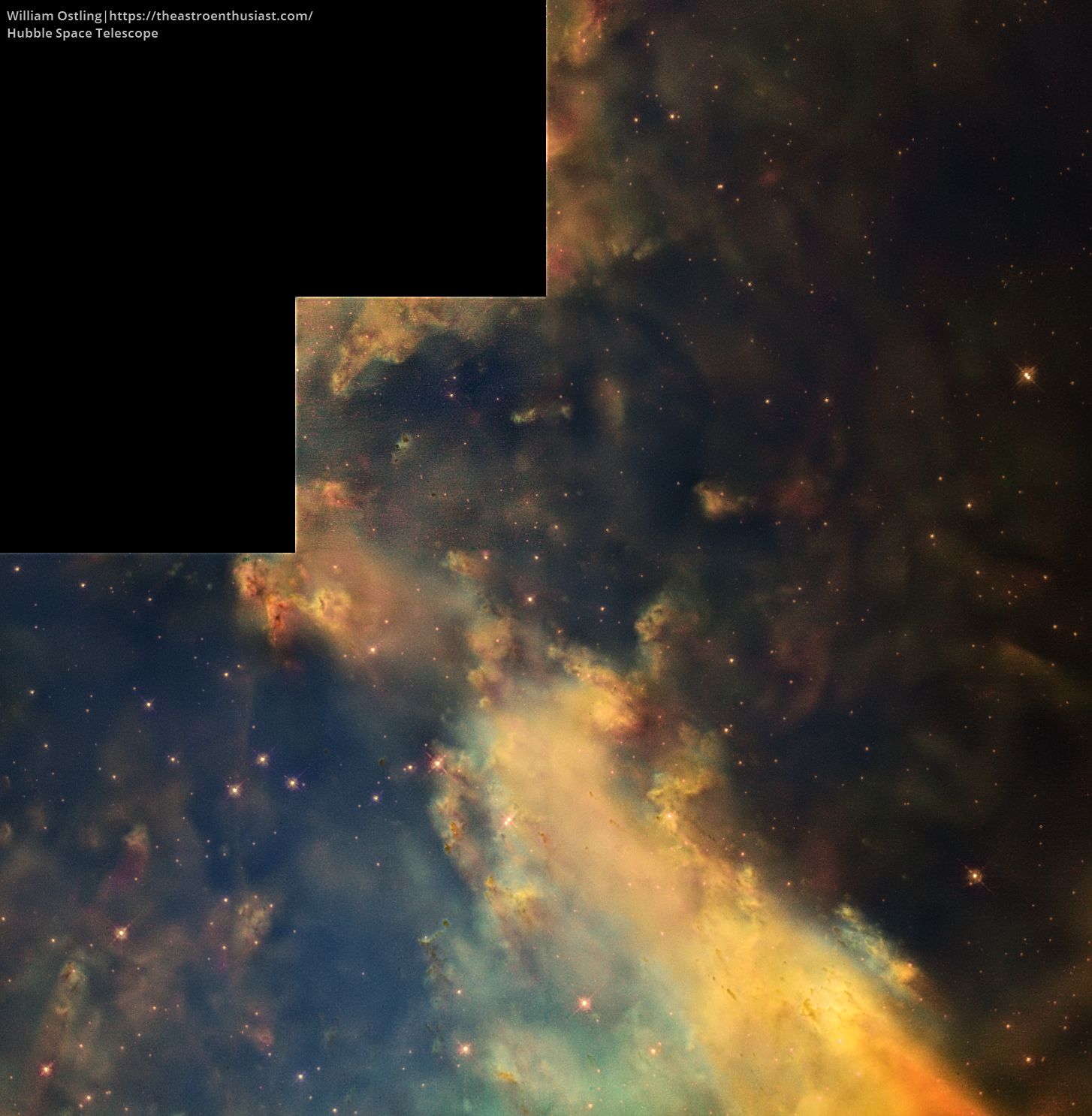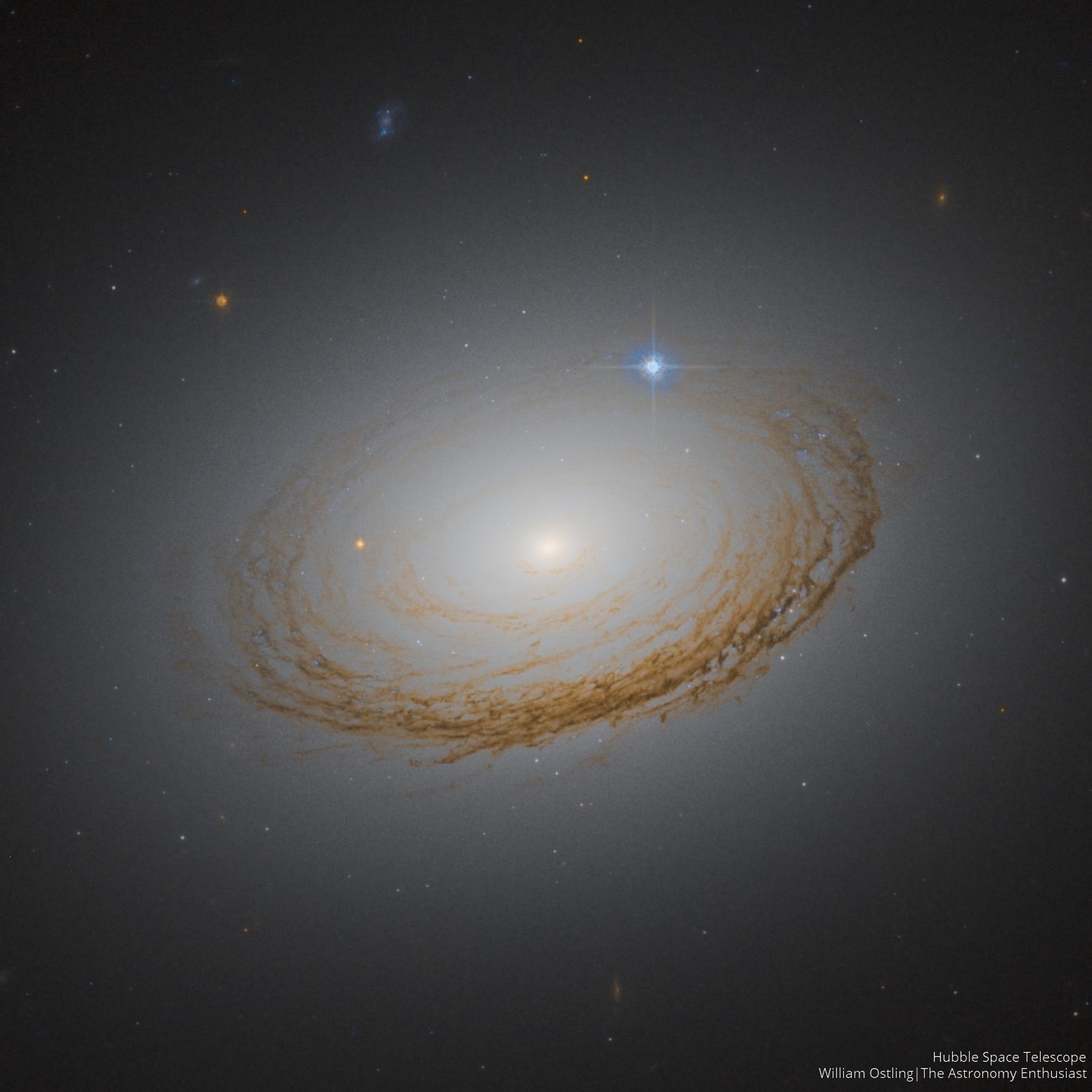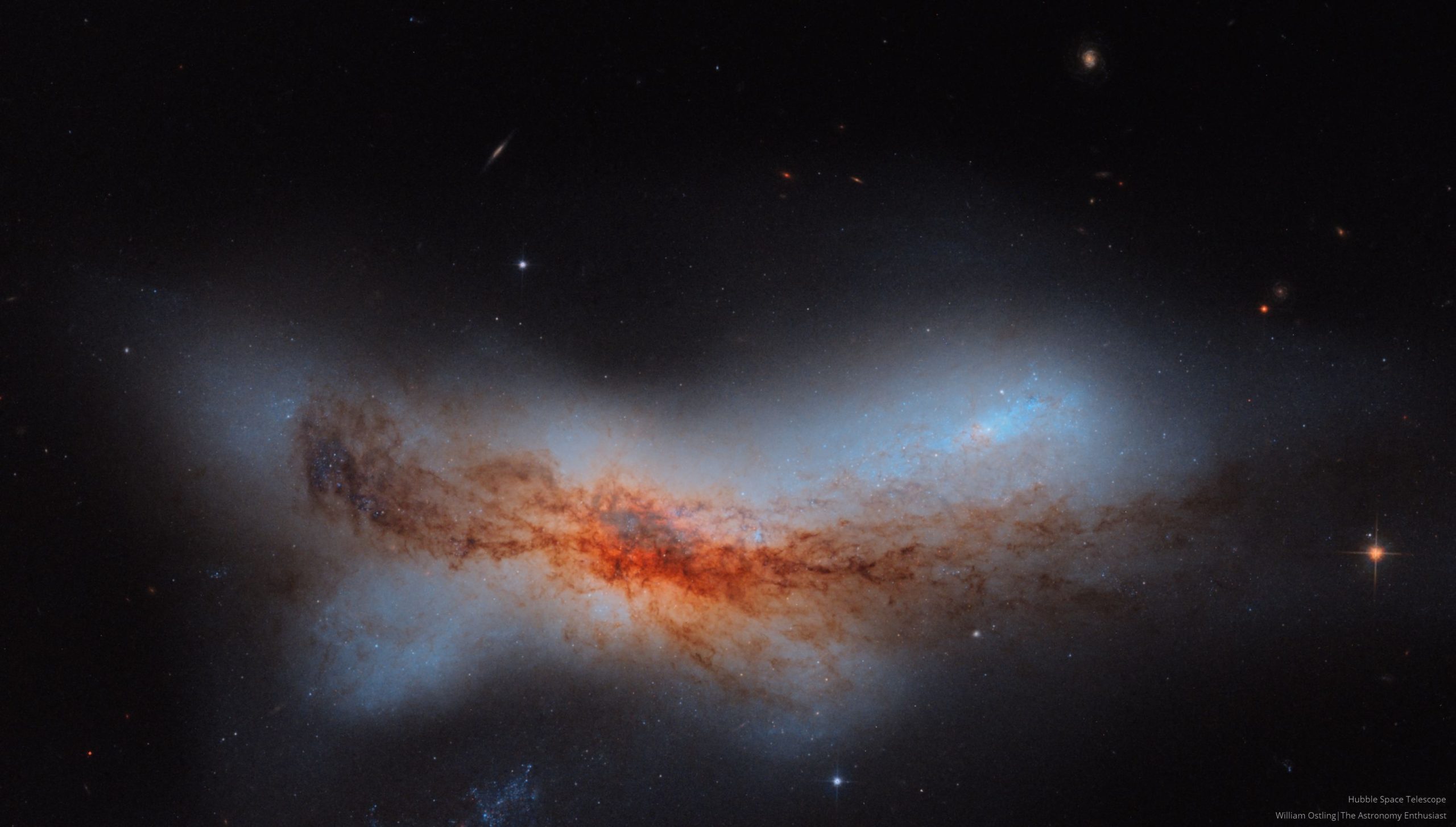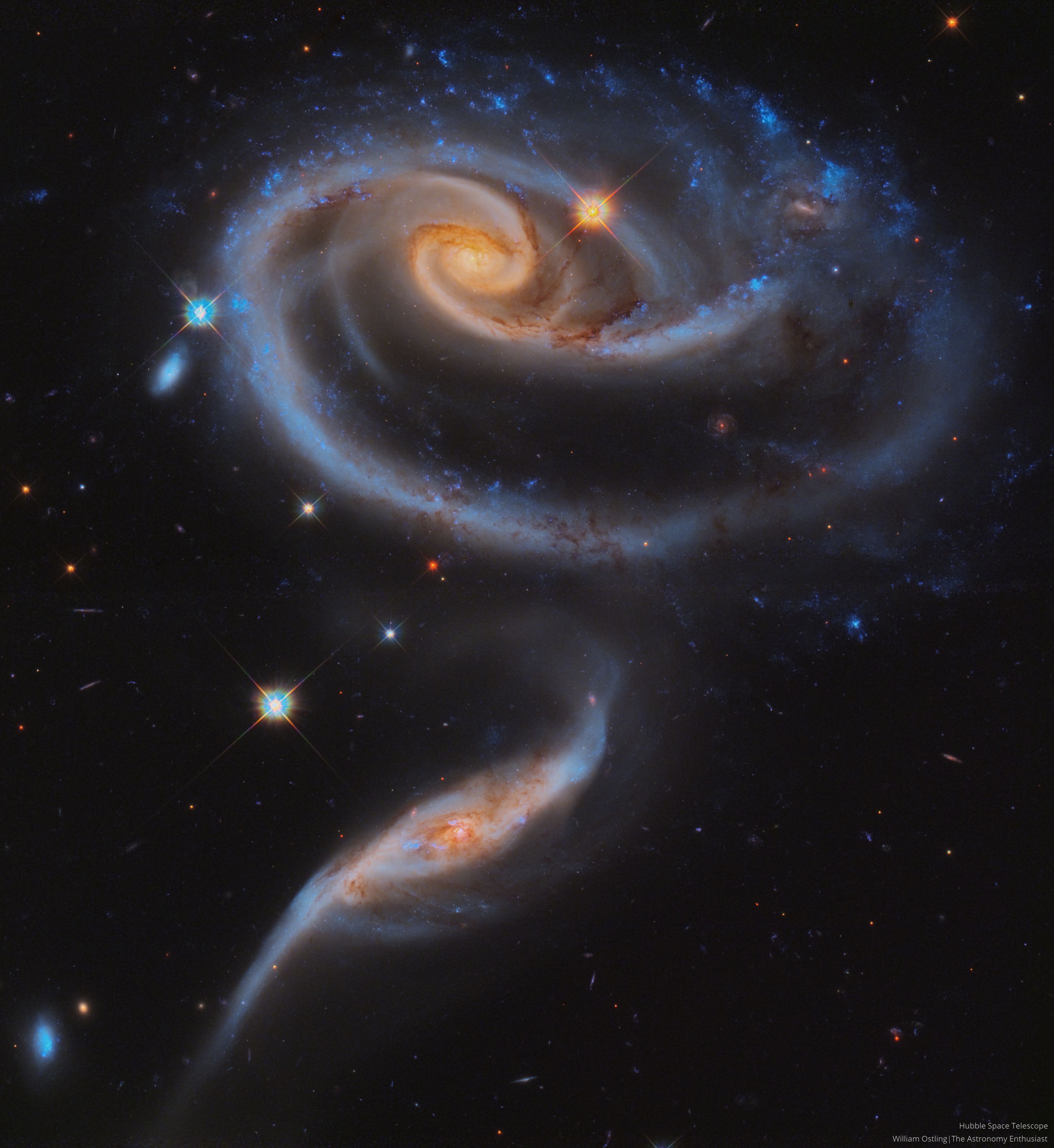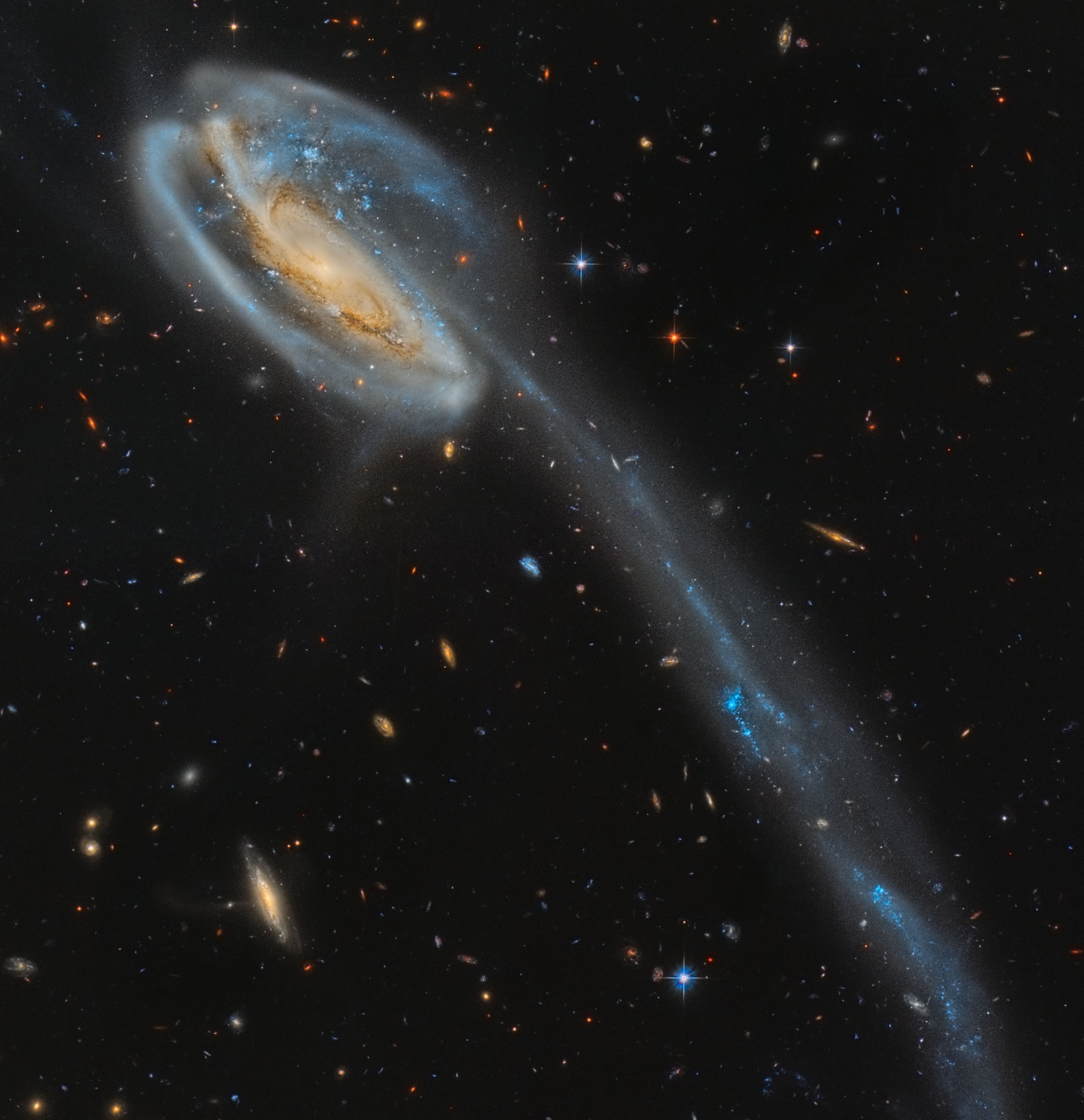NGC 4676 from Hubble
Update 10/4/2021: This image has been chosen as an APOD by NASA! You can view their write-up here: https://apod.nasa.gov/apod/ap211004.html. These two mighty galaxies are pulling each other apart. Known as “The Mice” because they have such long tails, each spiral galaxy has likely already passed through the other. They will probably collide again and again until they coalesce. The long tails are created by the relative difference between gravitational pulls on the near and far parts of each galaxy. Because the distances are so large, the cosmic […]
Read more